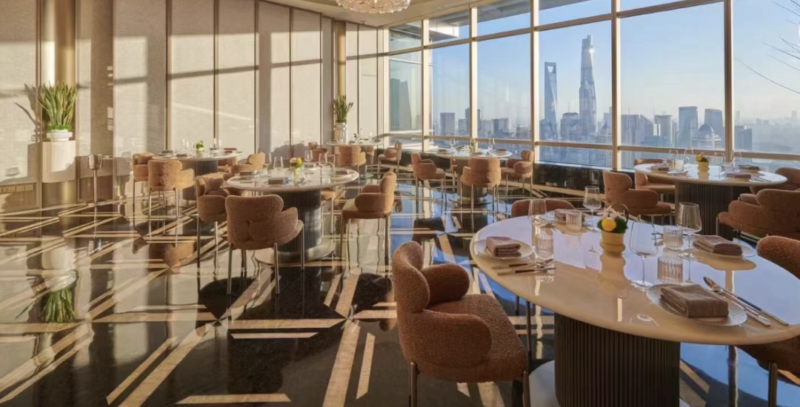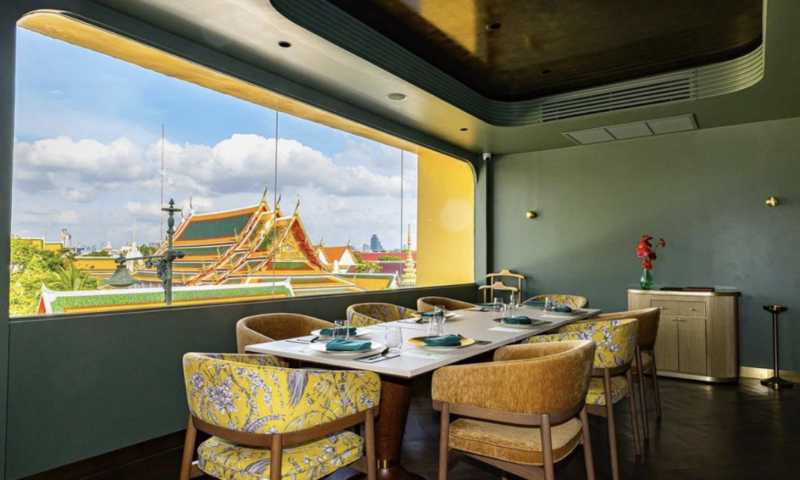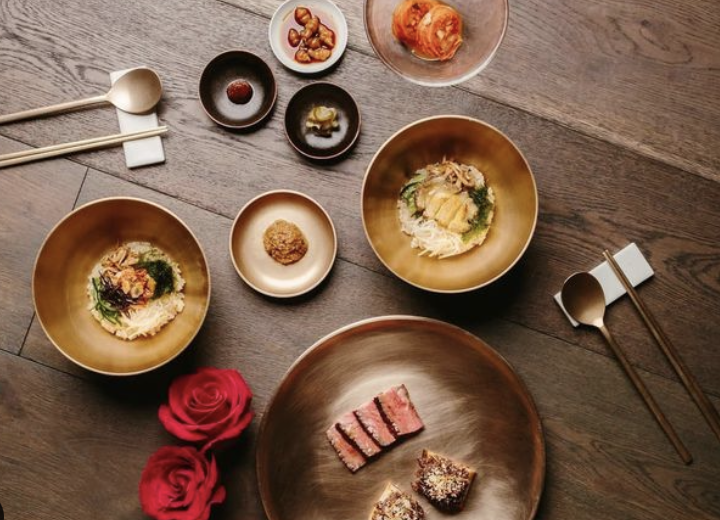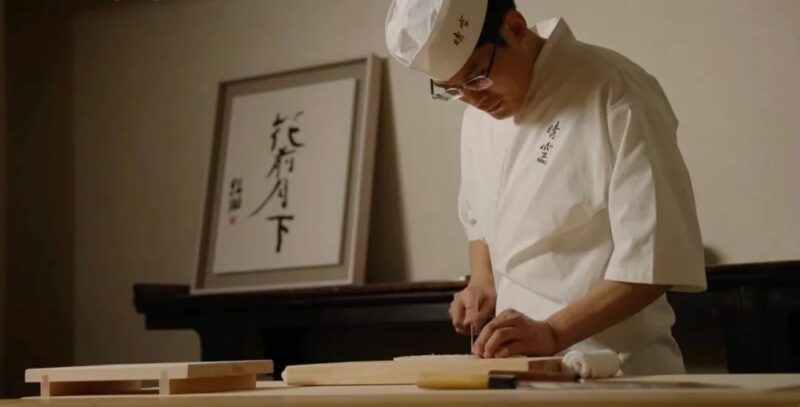If you want to replenish an exhausted body after a long day, stimulating sensations may not be a cure-all formula. Rather, sometimes a simple meal is all it takes to fix a sunken heart, to soothe the soul and restore the spirit. Seiku Shenzhen, a well-known Japanese restaurant in the gourmets’ circle, has finally come to Shanghai BFC. When Seiku first opened in Shenzhen, it invited the chef of a Michelin two-starred restaurant Kutan in Japan, Kotaro Nakashima, to be its consultant, who is also an alumnus of the three-star Kanda in Tokyo. At Seiku, you can easily detect traces of Kanda.
According to Seiku’s investors, high-end Japanese cuisine on the market is dominated by sushi omakase and kaiseki aesthetic. However, most high-end Japanese restaurants in Tokyo fall into neither of these categories. After visiting Kutan in Tokyo, they decided to open a Japanese restaurant in China that captures its food concept to fill the gap in the marketplace.
Revolving around Kanda’s core of cuisine — “Real Taste”, Seiku uses the best available ingredients to materialize the concept of Japanese cooking, a simple meal that nourishes the body, pacifies the mind from the daily rat race, and serves as home to the lost alone soul, just like a sacred temple.
It all started from Aoyagi’s chef Hirohisa Koyama, who comes from Tokushima in Japan. Even though he received mixed reviews after he reopened his restaurant in Tokyo, his contribution to Japanese cuisine is unquestionable. Three of the most famous three-star Japanese chefs, including Kanda’s chef Hiroyuki Kanda, chef Toru Okuda of Ginza Koju and chef Seiji Yamamoto of Ryugin, all studied under Hirohisa Koyama. Only that Ginza Koju was later reduced to two stars.
Interestingly, the three chefs went on pursuing different styles after they established their own restaurants. Ryugin is most renowned for its professional handling of glamorous banquets; Kanda values minimalism and simplicity in flavour; Koju’s style is somewhere in between.
I’ve never been to Kutan, but I’ve been to Kanda a dozen times. Kanda is all about simplicity and authenticity. The restaurant is compact in space and the owner has no intention of expanding. He insists that he wanted this to be a place where diners can get close to the beauty of the ingredients and meditate without having to be distracted by fancy, superfluous tricks that often burden our senses. To me, that’s the kind of surety and confidence I want in a meal.

 Chef He
Chef He
The appetizer Momen Tofu is served with seasonal figs. The firm, spongy Kyoto-sourced tofu is drained and pressed overnight to remove excess water before drizzled with dashi and mirin sauce and brushed with a bit of green yuzu foam. Very warm, elegant and full of layered flavours.
There is no extravagant presentation for the sashimi, which comprises a seasonal selection of organic tuna from Oma, Aomori, spot prawn, and Mazuma wasabi, only garnished with parsnip leaves to articulate a most elegant flair in a simple language. It is through details that a restaurant is being conveyed for its raison d’être.


Momen Tofu, Fig / Organic Tuna, Spot Prawn
As the main character of the soup, the Wan-mono (simmered foods in dashi soup) showcase the best ingredients the chef managed to acquire. Dashi soup is made from kombu sourced from Hokkaido and traditionally harvested bonito from Kagoshima. The kombu is first soaked in cold water overnight, then cooked at a specific temperature the next day to bring out its flavour, then strained after boiling with freshly shaved bonito. Everything has to be worked out exactly according to the order in which the guests eat.


Bowl Soup / IWA 5 Sake
I am particularly fond of shinjo (balls made from white flesh fish or shellfish) in Kanda’s Wan-mono. Seiku’s soup need not be synonymous, but it’s refreshing, simple, and full of sophistication. I have tried two different seasonal renderings at Seiku, and was particularly impressed with the hairy crab shinjo and matsutake soup. It was such an impactful, amazing culinary experience. Another time I was offered Nagasaki’s sweet sea bream with Shangri-La matsutake, but matsutake was not my personal favourite.
Chiba’s black abalone is steamed with sake and kombu for over four hours and served with cold Miwa somen noodles in a soup made from kombu and bonito. The white foamy surface is made by mashed abalone and topped with abalone liver paste to complete the whole setting. A traditional method. The aroma of the tender-soft abalone comes through as it is finely sliced, and it is simply a pleasure to watch the preparation process in front of the counter as it energises your body and mind.




Chiba Black Abalone, Miwa Somen Noodles / Grilled Cutlass Fish with Salt / Tomato Jelly, Sea Urchin, Caviar
Goma Tofu with Hairy Crab is served with fried goma tofu in a velvety, starchy sauce with hairy crab meat, and topped with chopped mitsuba root.
Takenoka’s silver pomfret is salt-grilled until lightly charred on the surface, and the fatty meat is savoury with vinegared yuzu sauce and served with mashed radish to refresh the palate.
Crisp-crunchy matsutake mushroom strips are enveloped by finely cut wagyu beef and slowly simmered in kombu dashi.



Wagyu Beef and Matsutake Roll
I have tried three different versions of kamameshi (rice cooked in an iron pot with various toppings). The wagyu and matsutake rice was not my favourite, however the Kyoto Koshihikari rice with Kujo leek and Nodoguro fish was particularly gladdening. The Kujo leek was not pungent but full of mild suavity. The Nodoguro fish is dried overnight and char-grilled to bring out its meaty fragrance and satisfying taste. Once the Kujo leek was out of stock, so they changed to Hokkaido corn, but the latter was somewhat less impressive in comparison.

 Wagyu Beef and Matsutake Rice / Nodoguro Fish and Kujo Leek Rice
Wagyu Beef and Matsutake Rice / Nodoguro Fish and Kujo Leek Rice
The desserts at Seiku also veer towards an honest-to-goodness aesthetic. The seasonal offer is ice cream made from chestnuts, azuki beans, freshly cooked glutinous rice, as well as milk mousse and green grape.
It is a rare place of tranquillity, without over-servicing or poor hospitality. It provides an appropriate amount of distance, a sense of comfort that most restaurants fail to capture the essence of, where too much or too little can make it difficult to concentrate on eating. Seiku has plenty of such space where diners are able to relax even when it nests in the buzzing mall of BFC.



There is no golden rule for what makes a good meal, but Seiku’s cooking philosophy is designed to give diners a thorough understanding of elegance and simplicity with a focus on seasonal ingredients, which I am also in favour of. With a tension-free sense of space and service, Seiku is an exclusive hideaway that brings at least a moment of peace, nourishes all bodily senses, and a safe choice to resort to weekly visits.
– End –
晴空·日本料理 Seiku Japanese Cuisine
📍 S405, No.600, ZHONGSHAN NO.2 ROAD(E)
☎️ 1751-0450-550
⏰ Lunch 12:00 – 14:00 / Dinner 18:00 – 22:00











